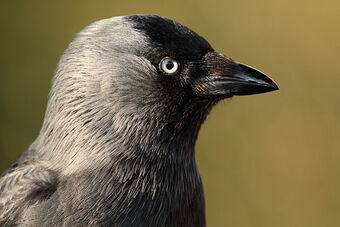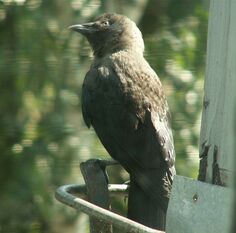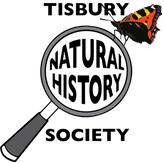 Photo: Jackdaw by Danny Chapman via Wikimedia Commons Photo: Jackdaw by Danny Chapman via Wikimedia Commons Throughout the year, but especially now in the breeding season, one of the common sights and sounds in and around Tisbury is the jackdaw - they like to breed in small towns and villages. This is our smallest member of the crow family, distinguished from the others by the silver-grey plumage around the back of its head and this, and the adult’s pale eyes, makes it easy to identify. It has a slightly stocky look and seems to strut somewhat when it walks.  Photo: immature Jackdaw via Wikimedia Commons Photo: immature Jackdaw via Wikimedia Commons It will take over the nests of other birds or use holes in trees and buildings. They sometimes become a nuisance by trying to form a nesting platform in a chimney by dropping lots of twigs down it. Indeed, piles of twigs scattered on the pavement in the High Street or on the station platform probably result from jackdaws’ nest building above. Like all the crows, jackdaws are inquisitive and intelligent birds, good at problem solving and captive birds can easily be taught to do tricks. They are quite sociable and pairs, which mate for life, are often seen sitting next to each other preening. These pairs may keep close contact with each other while flying and feeding in large winter flocks. They often nest in colonies such as on Old Wardour Castle and feed in nearby fields in raucous, mixed flocks with rooks. They can be seen flying acrobatically in groups repeatedly making their hard “tchack” call from which their name may be derived. Jackdaws have a varied diet including insects and invertebrates, worms, seeds, fruit, nestlings, carrion, and scraps. They will also visit gardens to collect food. Common throughout the British Isles but for the highlands and Western Isles the jackdaw population has been rising since the 1970’s. This success may be based on its ability to exploit a variety of habitats, its varied diet, and its tolerance of man. They certainly seem happy in and around Tisbury. *R H Barham, The Jackdaw of Rheims Comments are closed.
|
Photo: Avocets (Izzy Fry)
The headers display photos taken by our members. Do get in touch via the Contact Form if you'd like to submit a photo for selection.
Archives
May 2024
Categories
All
|

 RSS Feed
RSS Feed